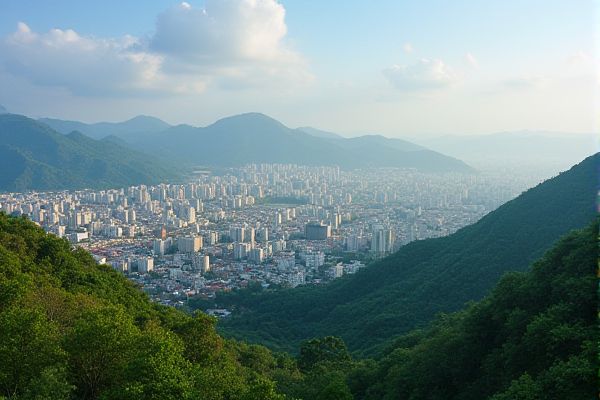
Education system and best schools in Vietnam: Vietnam's education system is highly competitive. Primary education is mandatory and free. Schools teach in Vietnamese, except for international ones. High-quality public schools are selective. Curriculum emphasizes mathematics and science. National examinations determine high school placement. International schools offer globally recognized curricula. Ho Chi Minh City and Hanoi have top-tier schools. Many schools require uniforms. Extracurricular activities are important but limited.
Vietnam’s education system is highly competitive.
Vietnam's education system is highly competitive, divided into five levels: preschool, primary school, secondary school, high school, and higher education. There is a strong emphasis on achievement and grades, particularly highlighted by the rigorous entrance examinations for high school and university admission. For more comprehensive insights into the structure and intricacies of the Vietnamese educational framework, visit the detailed overview on Education in Vietnam.
Primary education is mandatory and free.
Primary education in Vietnam is mandatory and free for all children aged six to eleven, lasting for five years and covering subjects such as Vietnamese language, mathematics, social studies, physical education, music, and art. This foundational stage ensures that every child receives the necessary skills and knowledge to build a strong educational base. For more detailed insights into the structure and policies of this educational system, you can visit the article on Education in Vietnam. The commitment to providing free education underscores the importance of learning in shaping future generations and fostering a well-rounded development for young learners across the country.
Schools teach in Vietnamese, except for international ones.
In Vietnam, the education system is predominantly taught in Vietnamese, with the curriculum centralized and managed by the Ministry of Education and Training. The system includes five levels: preschool, primary school, lower secondary school, upper secondary school, and higher education, with primary education being compulsory and free, although students must pay for textbooks and uniforms. International schools, however, offer education in other languages, catering to expatriate and international students.
High-quality public schools are selective.
High-quality public schools in Vietnam, particularly those labeled as "Truong Trung Hoc Pho Thong Chuyen" (specialized high schools), are highly selective and require high entrance examination test scores for admission, making them prestigious but also highly competitive. These institutions are pivotal in shaping the educational landscape of the country, reflecting a commitment to academic excellence and rigorous standards. For more detailed information about this system, visit the page on Education in Vietnam, where comprehensive insights into the structure and challenges of Vietnamese education are offered.
Curriculum emphasizes mathematics and science.
In Vietnam, the education system places significant emphasis on mathematics and science, with a curriculum that includes advanced courses in these subjects from primary to higher education levels. Mathematics is a mandatory subject in the National High School Graduation Examinations, and recent reforms have focused on realistic and practical mathematical knowledge. Furthermore, the integration of science subjects like physics, chemistry, and biology into the curriculum from lower secondary school onward highlights the importance of these disciplines. For more detailed information, you can visit the Education in Vietnam page to explore the educational transformations and developments in the country.
National examinations determine high school placement.
In Vietnam, high school placement is determined by an entrance examination that students must pass after completing lower secondary education. The National High School Examination (NHSE) or the High School Graduation Examination, administered by the Ministry of Education and Training, also plays a crucial role in evaluating students' eligibility for high school graduation and university admission.
International schools offer globally recognized curricula.
International schools in Vietnam, such as those under Nord Anglia Education, offer globally recognized curricula including the International Baccalaureate Diploma Programme (IBDP), Cambridge IGCSE, and Cambridge International A Level, blending English and Vietnamese instruction to provide pathways to outstanding higher education worldwide.
Ho Chi Minh City and Hanoi have top-tier schools.
In Vietnam, the education system is divided into five levels: preschool, primary, secondary, high school, and higher education. Ho Chi Minh City and Hanoi are notable for having top-tier schools, particularly high schools like Truong Trung Hoc Pho Thong Chuyen, which are prestigious and require high entrance examination scores to enroll.
Many schools require uniforms.
In Vietnam, the education system is highly structured and state-run, with a strong emphasis on compulsory basic education encompassing primary, secondary, and high school levels. While there is no specific mention of uniform requirements within the public education system, many international schools in Vietnam, such as the International School Ho Chi Minh City (ISHCMC) and Saigon South International School (SSIS), often implement dress code or uniform policies. These policies are part of their school regulations designed to maintain a professional and respectful learning environment. For more details on the structure and characteristics of the Vietnamese education system, you can explore the extensive information available on Education in Vietnam.
Extracurricular activities are important but limited.
Extracurricular activities in Vietnamese schools are becoming more popular but remain limited compared to American schools. While schools encourage participation in student-run organizations such as event organization, sports, and debates, there is a significant potential for more structured extracurricular programs. For a detailed comparison between the two education systems, you may refer to the Differences Between American And Vietnamese Education Systems resource. This will provide further insight into how these systems vary, especially in fostering a student's holistic growth through additional programs beyond traditional academics.
